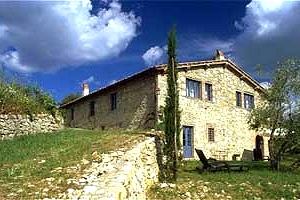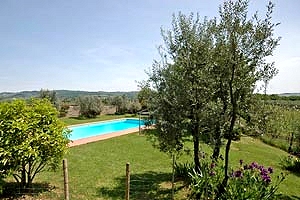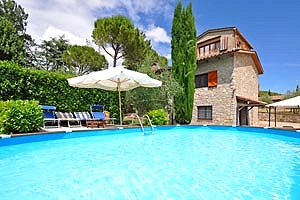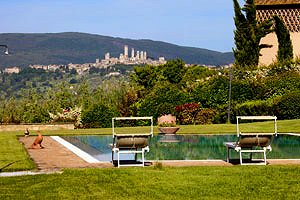



Chianti at the gates of Siena

Our most requested holiday homes:
 Tuscan villa with pool near Radda in Chianti in the countryside of Chianti between Siena and Florence. Sleeps 10, Internet connection.
More details
Tuscan villa with pool near Radda in Chianti in the countryside of Chianti between Siena and Florence. Sleeps 10, Internet connection.
More details
 Independent villa near Castellina in Chianti (Siena), in the heart of the Chianti Classico area. Sleeps 6, swimming pool, air conditioning, Internet connection. Possibility of organising wine tasting events and dinners.
More details
Independent villa near Castellina in Chianti (Siena), in the heart of the Chianti Classico area. Sleeps 6, swimming pool, air conditioning, Internet connection. Possibility of organising wine tasting events and dinners.
More details
 Independent house in an old hamlet in the Chianti Classico area, near the village of Gaiole in Chianti (Siena). Sleeps 8, swimming pool, wood-burning oven, children's playground with slide and swing, air conditioning.
More details
Independent house in an old hamlet in the Chianti Classico area, near the village of Gaiole in Chianti (Siena). Sleeps 8, swimming pool, wood-burning oven, children's playground with slide and swing, air conditioning.
More details
 Elegant luxury villa (originally a farmhouse) with panoramic view over San Gimignano . The villa is in San Gimignano , in Valdelsa, near the Chianti district, between Florence and Siena . Sleeps 12+2, swimming pool, Internet connection, air conditioning, hydromassage, gym, toys for children. Riding stable, tennis club and golf club nearby.
More details
Elegant luxury villa (originally a farmhouse) with panoramic view over San Gimignano . The villa is in San Gimignano , in Valdelsa, near the Chianti district, between Florence and Siena . Sleeps 12+2, swimming pool, Internet connection, air conditioning, hydromassage, gym, toys for children. Riding stable, tennis club and golf club nearby.
More details






